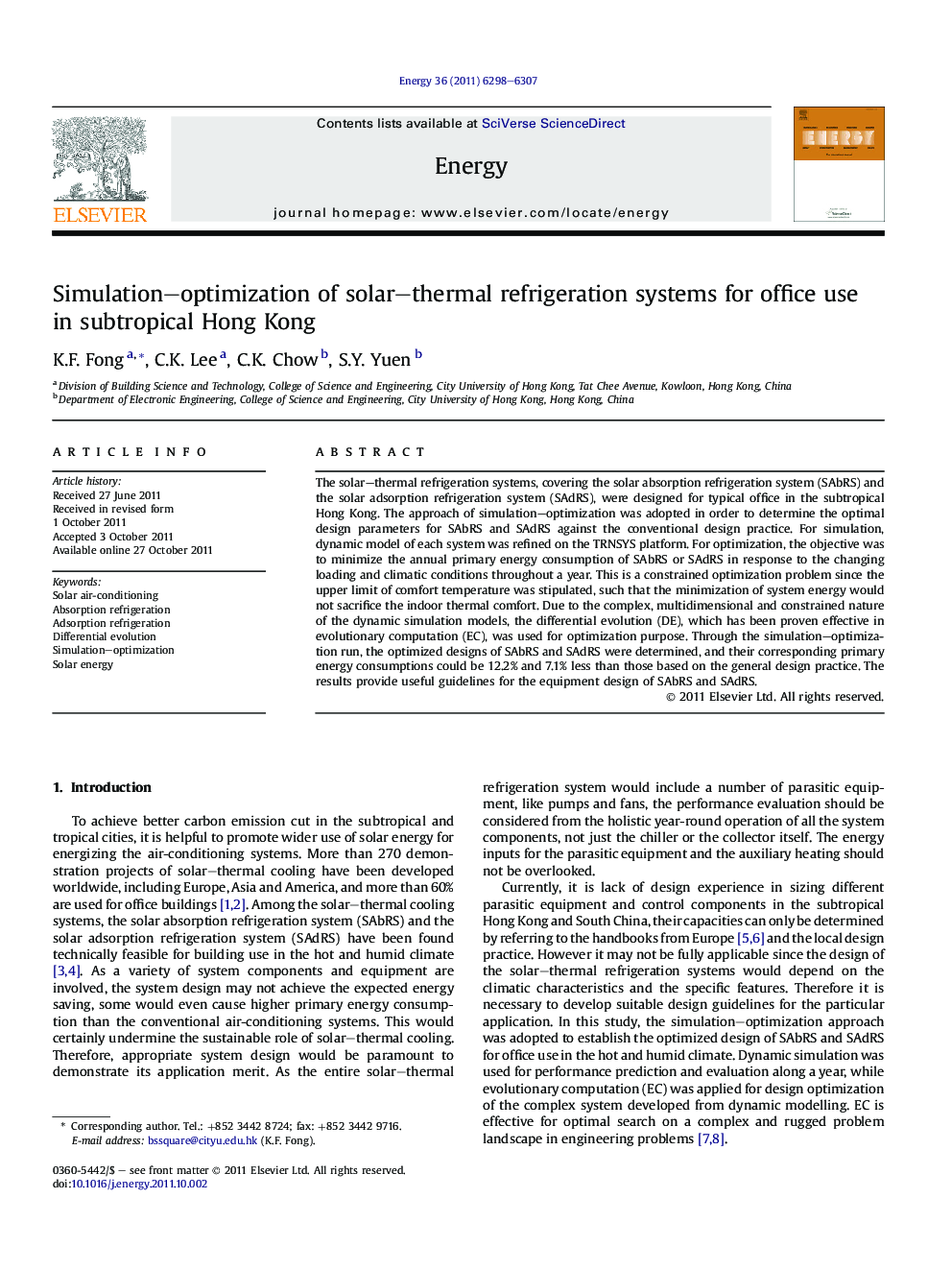| Article ID | Journal | Published Year | Pages | File Type |
|---|---|---|---|---|
| 1734367 | Energy | 2011 | 10 Pages |
The solar–thermal refrigeration systems, covering the solar absorption refrigeration system (SAbRS) and the solar adsorption refrigeration system (SAdRS), were designed for typical office in the subtropical Hong Kong. The approach of simulation–optimization was adopted in order to determine the optimal design parameters for SAbRS and SAdRS against the conventional design practice. For simulation, dynamic model of each system was refined on the TRNSYS platform. For optimization, the objective was to minimize the annual primary energy consumption of SAbRS or SAdRS in response to the changing loading and climatic conditions throughout a year. This is a constrained optimization problem since the upper limit of comfort temperature was stipulated, such that the minimization of system energy would not sacrifice the indoor thermal comfort. Due to the complex, multidimensional and constrained nature of the dynamic simulation models, the differential evolution (DE), which has been proven effective in evolutionary computation (EC), was used for optimization purpose. Through the simulation–optimization run, the optimized designs of SAbRS and SAdRS were determined, and their corresponding primary energy consumptions could be 12.2% and 7.1% less than those based on the general design practice. The results provide useful guidelines for the equipment design of SAbRS and SAdRS.
► Solar absorption refrigeration system (SAbRS) and solar adsorption refrigeration system (SAdRS) were involved. ► Simulation–optimization was adopted to determine optimized design for SAbRS and SAdRS. ► Due to complex dynamic simulation, differential evolution (DE) was used for optimization. ► Primary energy consumptions could be 12.2% and 7.1% less for SAbRS and SAdRS respectively. ► The results provide useful guidelines for equipment design of SAbRS and SAdRS.
